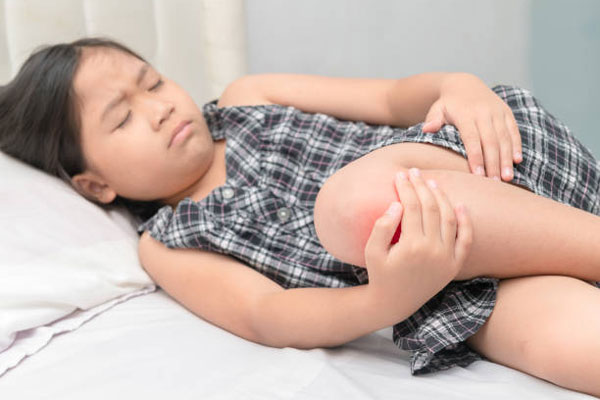Growing Pains
Growing pains are leg aches in children, which may decrease their threshold to bear the pain. They are harmless and are not related to any illness. Also, growing pains do not affect the child's ability to be active or even play sports. Usually, these pains stop by the age of 12.
What are growing pains?
When growth is accelerating, growing pains do not happen. Instead of joint discomfort, this pain affects muscles and bones. Most children with this condition report pain in the legs, especially in the front of the thighs, calves, or behind the knee region. This pain usually affects both legs.

What are the symptoms of growing pains?
The symptoms of growing pains vary from child to child. Some kids complain about severe pain; others do not have pain. In most cases, children experience this type of pain occasionally. Growth spurts do not cause growing pains.
Pain can be felt anytime, from late afternoon to late at night. The leg pains can be severe enough to disturb the child's sleep. During times of rapid growth, growing pains do not happen. Therefore, parents should not mistake such complaints from kids for being fake.
Growing pains can increase children's sensitivity to pain. Also, these children are more likely to develop abdominal pain and headaches.
What are the causes and risk factors of growing pains?
Growing pains do not have a definite reason. However, there is no supporting evidence to show that the child's growth is painful. Growing pains don't happen when a person is developing quickly. The possible cause of growing pains in children is muscle pain resulting from intense activities that lead to the wearing of the muscles. These activities mostly include running, jumping, and climbing.
Growing pains are usually common in preschool and school-age kids, especially those who are involved in a full day of sports. They are more common in girls compared to boys.
How are growing pains diagnosed?
The diagnosis of growing pains is mainly based on the way a child responds when touched while in pain. Kids with growing pains feel better when they are massaged, held, or cuddled.
The doctor reviews the medical history and symptoms of the child. A physical examination is done to check for signs of tenderness in the bones and muscles. Additionally, X-rays and blood tests might be recommended to rule out other possible causes with similar signs and symptoms.
What are the treatment options?
There is no particular treatment for growing pains. Usually, these pains get better on their own within a year or two. However, the below self-care measures and home remedies can reduce the child's discomfort until they completely get better.
- Gently massage or rub the child's legs to make them feel better. Sometimes holding or cuddling them also can ease the pain.
- Use heating pads to soothe the sore muscles. Heating pads may be used before bedtime or when the child complains of leg pain. A warm bath at bedtime is also found to be helpful.
- Give an over-the-counter pain reliever, such as ibuprofen or acetaminophen. Do not give aspirin unless prescribed. Long-lasting pain-relieving medicines, such as naproxen, may be given if the child wakes up more often during night.
- Encourage the child to wear supportive shoes while performing any activities.
- Ask the child to perform stretching exercises of the leg muscles as suggested by the doctor. Performing these exercise during day time may prevent pain at night.
What are the preventive measures for growing pains
Avoiding or minimizing the activities that may strain the muscles can prevent growing pains to a large extent in children.